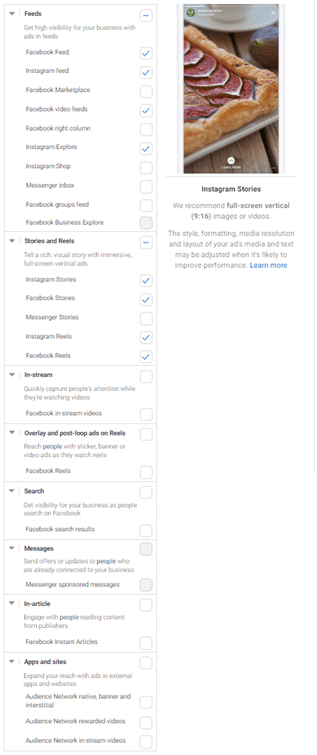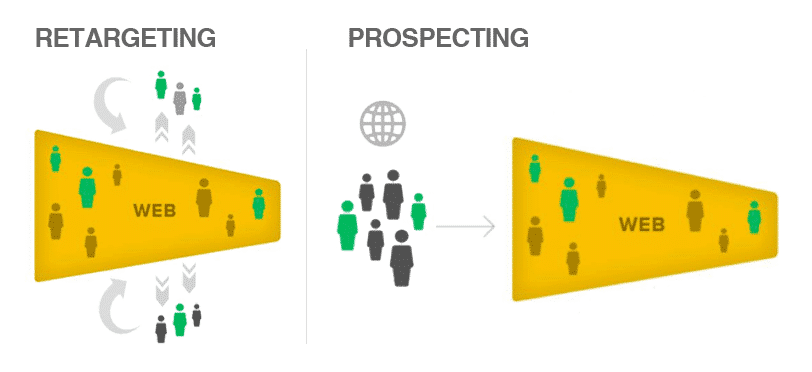Many companies, whether focused on online commerce or not, decide to advertise on Social Ads in order to make themselves known to a larger number of users with the aim of increasing their brand recognition or the number of customers.
In this article, we are going to talk about the different topics related to Social Ads:
Social Ads are considered to be all those ads that are made on Social Networks and, although the best known so far are Facebook Ads, in this article we are going to find out more about what they consist of.
1. Social Ads: On which platforms does Facebook Ads allow you to advertise?
Although we commonly call ads on Social Networks “Facebook Ads”, it is not entirely correct, because this medium allows you to advertise on many other platforms related to social networks. We can say that it is one of the most powerful platforms for Paid Social Media today, although there are also other platforms like Tik Tok Ads, Twitter Ads, Pinterest Ads, etc. Today it is possible to advertise on almost all social networks.
So, we can say that there is mainly Facebook Ads, but we must be aware that Social Ads encompasses many other platforms.
The most common platforms where FB Ads allows you to advertise are Facebook, Messenger and Instagram. What happens is that, as these three platforms are owned by Meta, it allows you to advertise on many other sites belonging or linked to this technological giant.
When it comes to choosing where to show ads, within FB, Messenger and IG platforms, they are organized based on these options: Feeds, Stories and Reels, In-stream, Overlay and post-loop ads on Reels, Search, Messages, In-article and Apps and sites.
Mainly, the most recognized locations are:
- Feed : video or image posts on the main pages of the different platforms.
- Stories and Reels: Posts, in video format, in the stories and reels section of the different platforms.
But there are others that are not as well known:
- In streem: Posts in video format, programmed to appear during the playback of a video.
- Overlay and post-loop ads on Reels: Posts in video or image format, exclusively to monetize Instagram Reels, through Banners, Stickers or Loops.
- Search: Exclusive to FB, these are ads in image format that appear when a search is performed on the platform.
- Messages: Ads to impact users who have contacted you via Messenger.
In-article:
Ads that will appear in FB Instant Articles.- Apps and sites: Ads to be displayed in external Audiences Network applications.
2. What is the structure of the Facebook Business Manager?
It is divided into 3 levels:
Campaigns: at this level you can configure the name of the campaign, objective and budget.
Ad groups: at this level you can edit the conversion method, pixel, ad group duration, audience (demographics, interests, custom audiences, lookalike audiences), placements and Budget optimizations.
3. Announcements: Finally, at this level, the announcement is created. You choose the type of ad you want, insert the creatives and copies, as well as the call to action, the destination URL and the tracking.
What is the recommended budget?
Many companies wonder if they have enough budget to make Ads and what would be the recommended budget, the answer to this question is: it depends. We recommend a minimum of 500€/month which is about 16,6€/day but this amount increases depending on the size of the audience you want to impact, the difficulty of targeting this audience and the number of impacts (frequency).
The ideal is to first test how it works and, if it has a positive impact on sales, gradually increase the budget.
How do we know if it is working for us? Very simple, we have several ways to calculate it.
The first is very simple and consists of comparing your results in terms of reach, engagement and sales with a similar previous period, when you were not launching Ads.
The second one requires a little calculation, but it is also very easy. It consists of calculating our cost of acquisition through Ads and comparing it with our net margin.
- If our COST > our MARGIN: It is not profitable to launch ads (unless we are doing a growth strategy and we do not mind having temporary losses).
- If our MARGIN > our COST: Then we are already making a profit.
In the case of a recurring service, a subscription model or a type of customer with a certain recurrence, we will compare the margin with the “Life Time Value”.
4. How to create an audience and what types of audience are there?
There are two main types of audiences. Prospecting”, whose objective is to impact people who do not know your brand yet, and “Remarketing”, which consists of impacting people who already know you previously.
Prospecting
From “Prospecting” we can create:
– Open Hearing
It consists of a hearing without many specifications, maximum age or location. Its size will be very high, the frequency will be very low and it will be FB’s algorithm that will be in charge of optimizing, focusing more and more on the target audience according to the results.
– Interest
As the name says, all the knowledge that Facebook has acquired about us and our behavior in social networks, allows us to target the interests of our potential audience. For example, if we want to promote a sports brand, our target audience will be sporty people and we will have to add interests such as different sports, well-known sports brands, sports clubs, etc.
– Lookalike
It consists of manually uploading a list with the information of customers, contacts, subscribers, etc. and Facebook takes care of creating a similar audience, based on the information of all the contacts (name, email, zip code, age, etc.). The affinity of the lookalike can be adjusted by percentages.
Remarketing
Remarketing audiences:
– Website visitors
Through the pixel, which is a piece of code that we implement on our website, we can track which users and what behavior they perform on our website.
This allows us to re-engage anyone who has visited our website with our ads. You can also reach people who have viewed specific products or categories on your website.
– Social Engagement
It allows you to re-engage users who have interacted with your FB or IG account.
– Lists
You can upload specific lists of more than 1000 users/customers and impact them.
In remarketing audiences, it is very important to remember to negativize those users who have already converted, because if not, they may get tired of seeing our ads and our efforts will have a negative impact.
Normally, the message we send in a Remarketing campaign is much more direct than in the case of Prospecting, since, by knowing you previously, you can speak more directly to users about your product and do it with a message more focused on conversion.
5. Ad formats
Image or video
- JPG or PNG files for images and MP4, MOV or GIF files for videos.
- Respecting the format: square 1080x 1080 and vertical format 1080 x 1350.
- Avoid putting information at the top and bottom edges and leave room for logo and CTA.
- The recommended duration is around 30s.
- Dynamic and fast videos with music and subtitles, relevant information must appear in the first 3 or 4 seconds.
- Not only are the creativities, we will have to create at least 3 copy variations, recommended to use emojis, of 125 characters for the main text and 40 characters for the title.
Carousel
- JPG or PNG files for images and MP4, MOV or GIF files for videos.
- Respecting the format: square 1080x 1080 and vertical format 1080 x 1350.
- It is recommended that the carousel contains about 4 creativities.
- The first image is the one that will capture attention, so it has to be simple and have a hook.
- Not only are the creativities, we will have to create at least 3 copy variations, recommended to use emojis, of 125 characters for the main text and 40 characters for the title.
Collection
- JPG or PNG files for images and MP4, MOV or GIF files for videos.
- Respecting the format: square 1080x 1080 and vertical format 1080 x 1350.
- Ideal to show the catalog or to make a campaign based on the products.
- Not only are the creativities, we will have to create at least 3 copy variations, recommended to use emojis, of 125 characters for the main text and 40 characters for the title.
6. What are the “Best practices” for creativities and how often to change them?
What are the “Best Practices” that you can implement in Social Ads and that you will have to take into account when designing your creatives:
There are currently 2 types of content dominating all social networks:
“Branded Content”
y
“UGC (User Generated Content).”
.
Branded Content” arises from the need to differentiate in a very saturated environment. This is based on the creation of content that highlights the brand’s values. Through the use of story telling, we manage to represent the brand, and not the product, appealing to users’ emotions.
The “UGC” content is a recent practice that is obtaining very good results for companies. This type of content allows us to present ourselves to users in a closer way, highlighting the functionalities of the products and providing the user with the necessary information to make a purchase.
For the configuration of the Ads, it is recommended to create 3 to 4 creas, to use in each group of ads and keep them for about 2 weeks. After this time, we will be able to evaluate its performance. Then, we will change the ones that are performing worse, based on the KPI’s, for new ones that are more aligned with the ones that are performing better.







